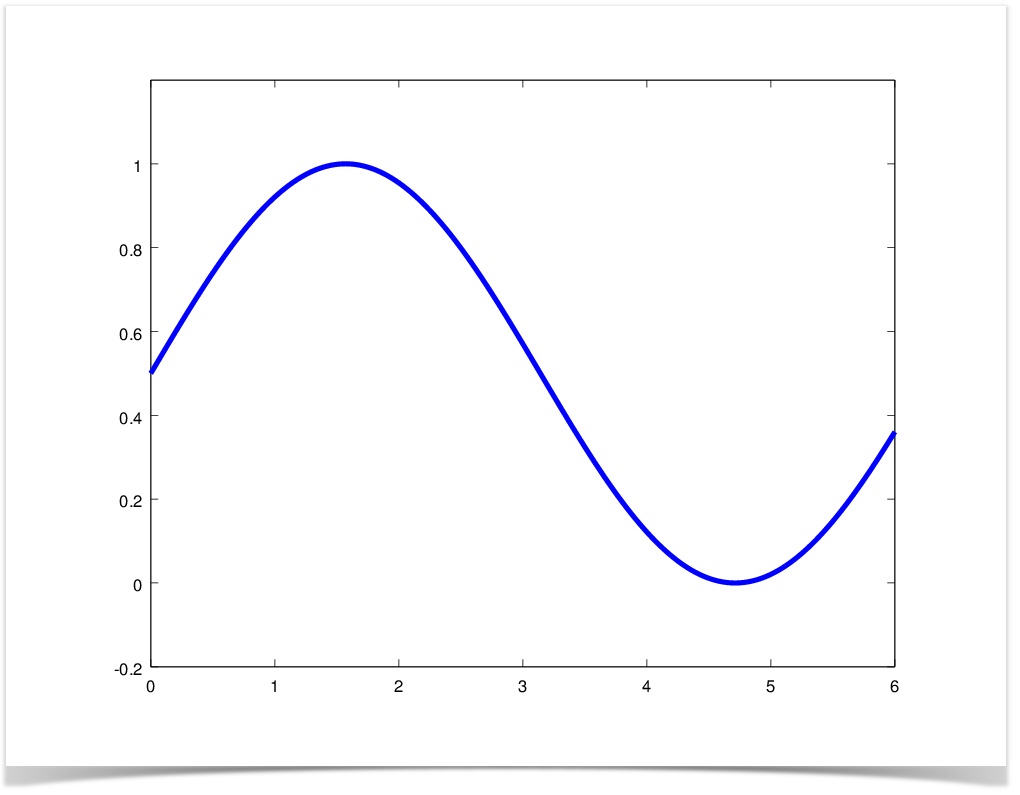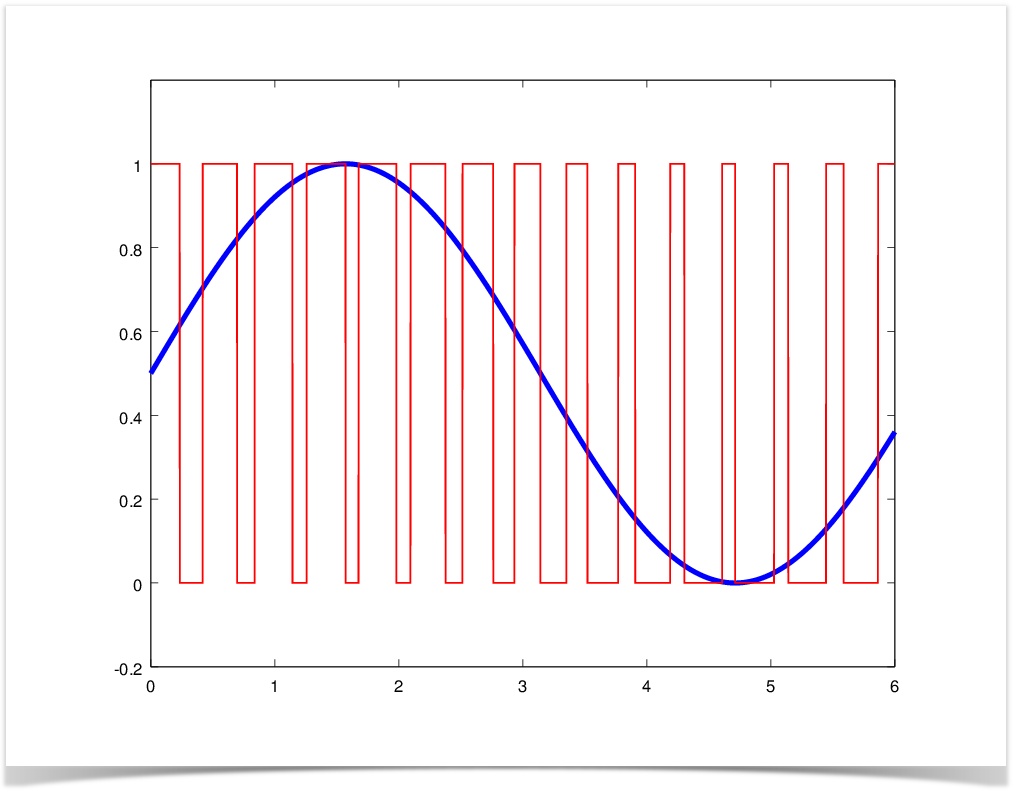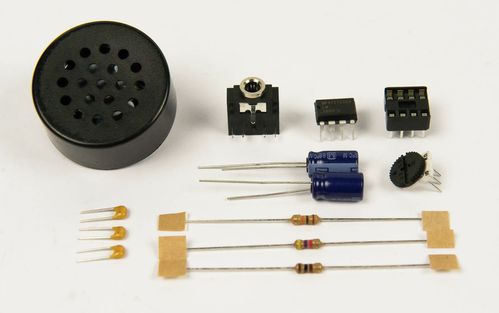Section 6: Audio
Overview
Here's how it works:
I could have made a very complicated voltage ladder, but that would have made the board a lot more complex and cost a lot of pins (so no more expansion port!)
The Story So Far
So you'd like to generate a beautiful audio tone from your LameStation. That's nice.
Escaping The Processor!
A computer can only operate on data, ones and zeroes and such, but your ear can't listen to a bit stream, because that would just sound like dial-up internet*.
There's lots of ways to generate an audio signal electronically, but one of the simplest is Pulse Width Modulation. That's a fancy way of saying turn the pin on and off really, really fast, depending on the level of the signal at that moment.
The result is a blocky, horrible-sounding signal that, on average, is equal to the original waveform.
*for those of you born after dial-up internet, I feel old. Listen here: https://www.youtube.com/watch?v=gsNaR6FRuO0. You've been warned...)
Filtering
Two filter average this out to a smooth lower-frequency signal.
Controlling Volume
A volume knob behaves like an adjustable voltage ladder, determining how much of the input voltage reaches the amplifier.
Pumping It Up!
An amplifier takes the signal and gives more power to it, so that it has enough current to drive speakers.
Another Filter
Another filter reduces noise from the amplifier.
Eliminating Bias
A large capacitor removes the DC offset, so that the speaker won't be stressed as much. (more explanation needed)
Output To The World
The signal is output to either a speaker, or headphones if some are connected thanks to a small switch inside the jack.
Word of caution: The speaker is magnetic and will pick up small components if it gets too close. If you can't find one of the small capacitors, you should look there first!
Schematic
Parts Needed
- 1 x 8Ω speaker
- 1 x 3.5mm audio jack
- 1 x LM386 audio amplifier
- 1 x 8-pin DIP socket
- 1 x 10kΩ resistor
- 1 x 4.7kΩ resistor
- 1 x 100Ω resistor
- 3 x 0.1μF capacitor
- 2 x 100μF capacitor
- 1 x 10kΩ thumbwheel potentiometer
Unless otherwise noted, content on this site is licensed under the
Creative Commons Attribution-ShareAlike 4.0 International License.




